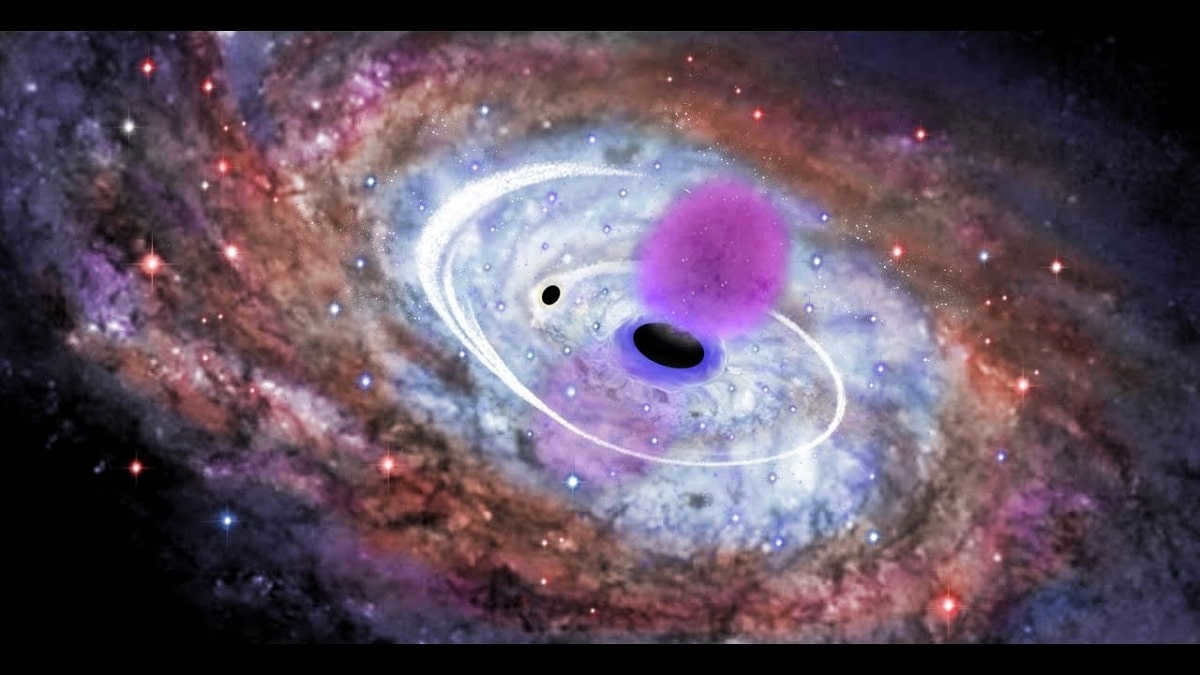
The center of the Milky Way has long been a mystery for scientists, as they have pondered the question of what lies at its core. Understanding the nature of the center is crucial for gaining further knowledge about our universe and the lifespan of our solar system.
In this article, we will explore the enigma of the center of the Milky Way and delve into its distinctive features.
The focal point of the Milky Way
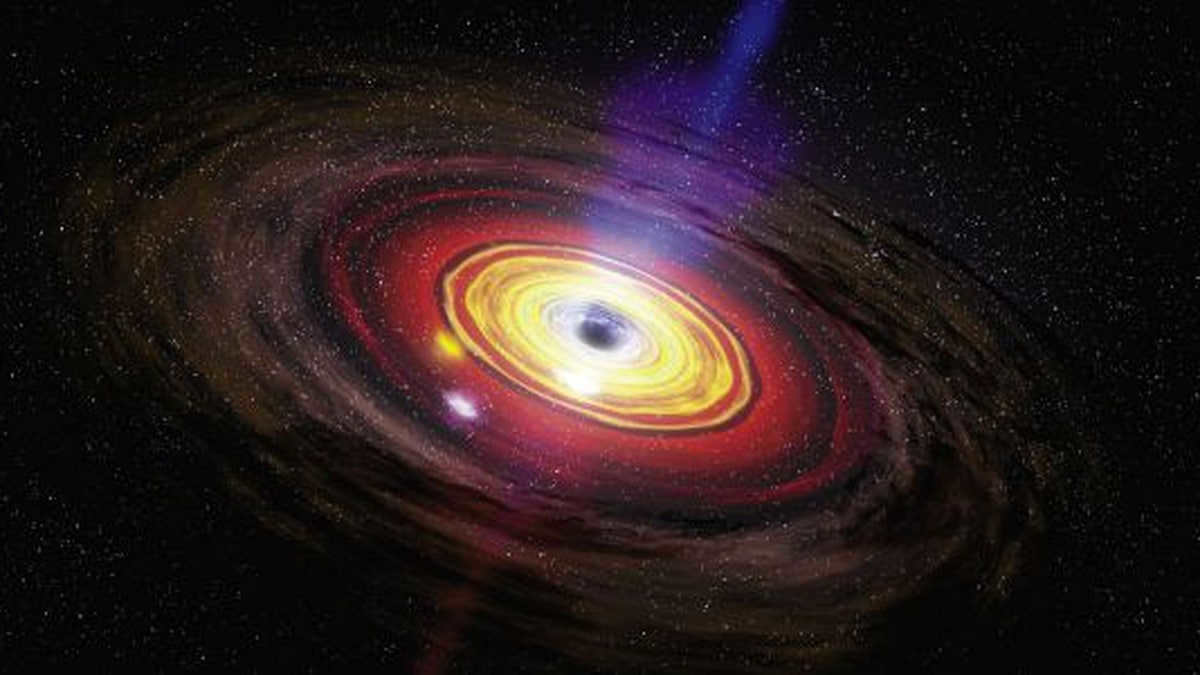
One of the challenges in space observations is the presence of interstellar dust, which often makes it difficult to understand certain phenomena. This was the case with Tabby’s “mysterious” star. However, with the advancement of high-frequency gamma-ray, infrared, and X-ray observatories, we now have a better understanding of it, despite the interference from dust.
In 2002, X-ray data sent by a young Chandra telescope revealed what exists at the center of the Milky Way. This data confirmed the long-held suspicion that there is a supermassive black hole in the center. The ability of these X-rays to penetrate the gas cloud surrounding the black hole is crucial in providing insight into the matter just before it gets consumed by the black hole.
Chandra has also made a discovery of a group of smaller twin black holes revolving around Sagittarius A* at the core of our galaxy. Chandra’s estimation suggests that there are approximately 10,000 black holes in total around Sagittarius A*. Sagittarius A* holds immense significance as a highly concentrated and brilliantly radiating center of our galaxy, or in other words, the supermassive black hole that has been given the name within the broader structure of Sagittarius A.
How does the center of the Milky Way appear?
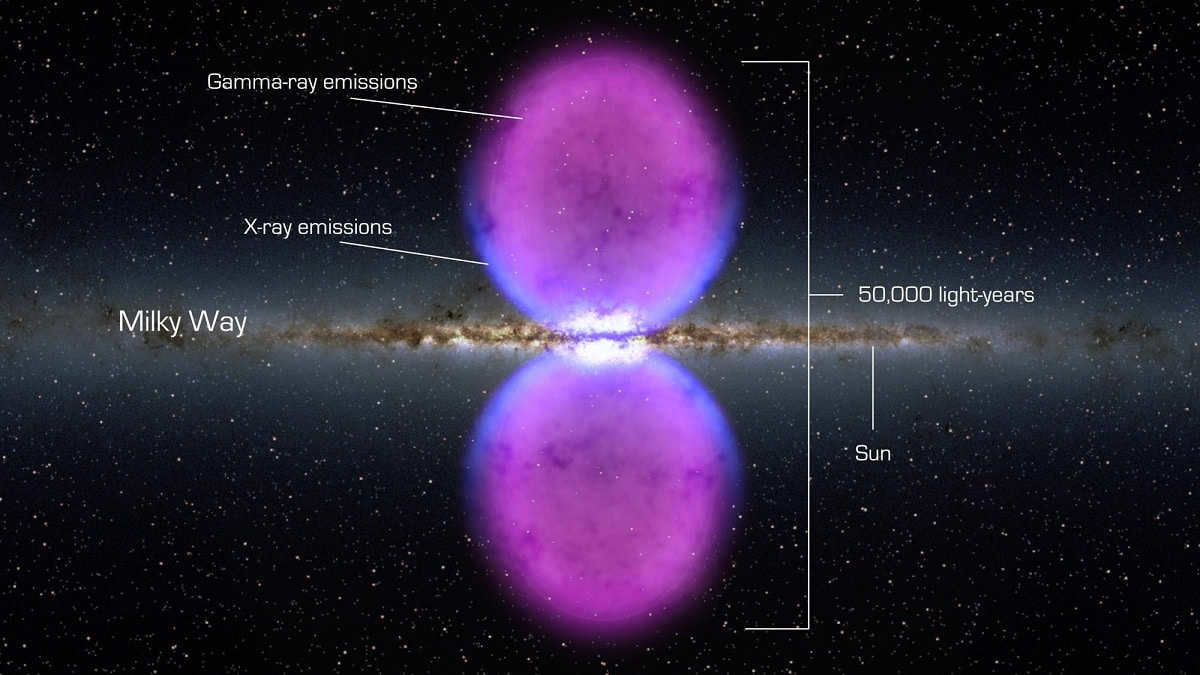
As we have witnessed through the use of advanced space telescopes, this telescope’s mechanics have the capability to detect various wavelengths. Consequently, astronomers have been able to examine the movement of a star at that specific location by utilizing infrared imagery. This examination aids in our comprehension of the formation, mass, and structure of the cluster. In 2018, Chandra and ESO presented a virtual tour of the center of the Milky Way, providing a 360-degree view. Through this visualization, the researchers were able to grasp the presence of X-rays that had been previously observed in a disk approximately 0.6 light-years beyond Sagittarius A*. Subsequently, they concluded that although the activity ceased about a century ago, it still has an impact on the surrounding regions.
A group of astronomers recently conducted a comprehensive survey of this potentially barren region. Leading the effort were Chris Packham, a professor of physics and astronomy at the University of Texas, and Pat Roche, a professor of astrophysics at Oxford University. Together, they utilized data from the infrared cameras of the Gran Telescopio de Canarias (located in La Palma, Spain) to create a highly detailed map of the magnetic field lines emanating from Sagittarius A*. This was possible because infrared radiation is capable of penetrating the dust cloud that lies between Earth and the galactic core. Additionally, their camera equipment was equipped with specialized filters that allowed them to track the paths of polarized light associated with magnetic fields, granting them an unprecedented level of precision.
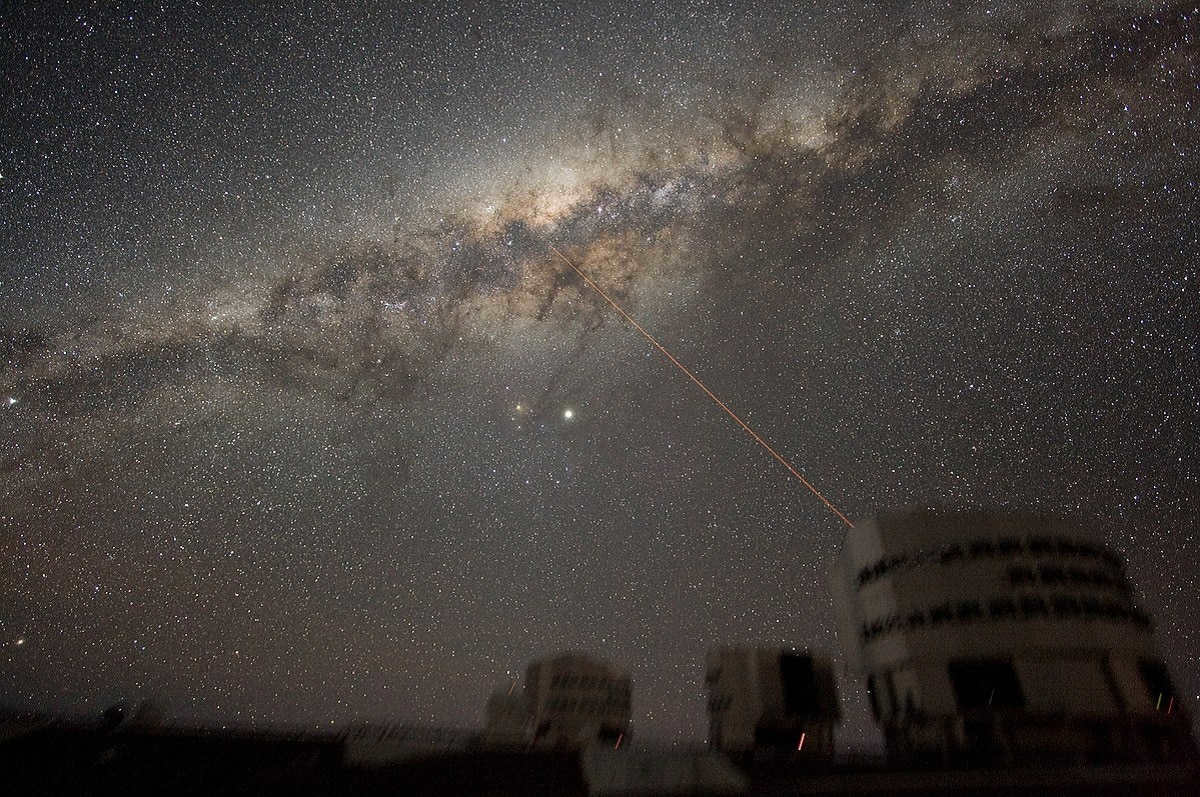
The outcome: a result similar to Van Gogh’s Starry Night, albeit with certain stars that are emitting a significant amount of infrared radiation, entangled amidst these lines of force and positioned around this supermassive black hole.
This represents the most distinct infrared depiction of the galactic center ever captured, and marks the first instance in which the magnetic field lines have been observed in intricate detail at a distance of 25,000 light years. Given the frequency of these occurrences, it presents an opportunity to gain further insights into the field and the essence of cosmic phenomena.
The data they collected when constructing this map focuses on the behavior of dust in relation to magnetic fields and powerful stellar winds, as well as the influence of a smaller magnetic field near the core. This smaller field plays a crucial role in the movement of gas and dust surrounding supermassive black holes.
What makes all of this fascinating, apart from the captivating images and maps that can be generated, is that by addressing one question, we uncover a multitude of new queries. When the visible spectrum fails to provide insights into certain regions, scientists invent new tools to detect and explore our surroundings, gradually uncovering the origins of everything.
With this information, I trust you will gain a deeper understanding of what lies at the heart of the Milky Way.
The information in this article is consistent with our editorial guidelines on ethical standards. If you find any inaccuracies, please click here to report them.
Summary of the Full Article: Network Meteorology " astronomy " Exploring the Core of the Milky Way
The Milky Way is a spiral galaxy that encompasses the Earth and the entire solar system. It is also referred to as the Galaxy. The stellar disk of the Milky Way has a radius of 16 kiloparsecs, which is the same as the radius of the Galaxy. However, the Galactic halo can be traced even further. The estimated total mass of our Galaxy, including dark matter, is usually around 1-2⋅10 12 M ⊙. The Milky Way hosts a total of 100 to 400 billion stars, and its luminosity is 2⋅10 10 . Therefore, compared to other spiral galaxies, the Milky Way stands out with its substantial mass and high luminosity. The solar system is situated at a distance of 7.5-8.5 kiloparsecs from the center of the Galaxy and orbits around it at a velocity of 220 km/s.
All the stars that can be seen in the sky without the use of a telescope are part of our Galaxy. However, when discussing the view of the night sky, the Milky Way is typically referred to as the light-colored hazy band that encircles the entire sky. Since the Earth is located inside the Milky Way, we do not have an exact view of our Galaxy from the outside.
The stars in our Galaxy are primarily concentrated in a disk with open spiral arms. Additionally, there is a medium-sized bulge and a moderately pronounced bar, which classifies our Galaxy as either SBbc or SABbc according to morphological classification. Moreover, the Milky Way disk is encompassed by a galactic halo that contains a small portion of stars and a significant amount of dark matter. At the very center of the galaxy, there is a supermassive black hole.
The estimated rate of star formation in the Milky Way is around 1.6-2 stars per year. To simplify, the Galaxy’s stellar population can be categorized into two groups: population I and population II. Population I consists of younger stars with higher levels of heavy elements, moving in circular orbits within a flat, rotating galactic disk. On the other hand, population II comprises older stars with lower metallicity, following elongated orbits and forming a spheroidal halo that lacks overall rotation and bulge. Interstellar gas and scattered star clusters are part of population I, while globular clusters belong to population II. However, it is more accurate to separate the thick and thin disk, halo, and bulge subsystems individually. Each galaxy subsystem also exhibits distinct dynamics, with flatter subsystems rotating at a faster pace and having lower velocity dispersion.
We are situated within a vast celestial system. And as you gaze upwards, you marvel at its constellations. Therefore, locating the Milky Way should pose no difficulty. However, every entity has its pioneers. To whom does the Milky Way credit its inception? Who were the individuals who first discovered this galaxy?
Naturally, it is impossible to determine who initially beheld it in the night sky. After all, if we solely rely on basic observation, it would have been our primitive ancestors. Hence, it is more fitting to investigate who first recognized the Milky Way as a distinct galaxy.

Ancient Greek philosophers held the belief that there existed a vast assemblage of stars before them. The brightness of this assemblage was such that individual stars couldn’t be discerned. However, the first evidence supporting this notion came in 1610, thanks to Galileo Galilei, who was able to resolve the stars through his telescope.
In 1755, Immanuel Kant proposed that he too was observing a collection of stars, with their objects being held together by gravity. According to his theory, these stars must orbit around a central point, with our own system being located inside it. In 1785, William Herschel attempted to recreate this shape, but was unsuccessful due to a significant portion of the area being obscured by dust and gas.
In the 1920s, Edwin Hubble made a significant discovery that revolutionized our understanding of the universe. He proposed that spiral nebulae, which were previously thought to be part of our own galaxy, were actually separate galaxies. This breakthrough not only expanded our knowledge of the vastness of the cosmos but also shed light on the identity of our own home galaxy. Armed with this newfound information, we can now confidently say that Edwin Hubble was the scientist who discovered the Milky Way.
Due to the abundance of electric lights in our modern era, the residents of urban areas are deprived of the opportunity to marvel at the awe-inspiring sight of the Milky Way. This celestial phenomenon, which graces our night sky during specific periods of the year, can only be truly appreciated in remote regions away from bustling cities. In our particular latitudes, the month of August presents an especially breathtaking display. During the final month of summer, the Milky Way gracefully ascends above the Earth, forming a magnificent celestial arch. This ethereal band of light, although faint and hazy, becomes increasingly dense and radiant as it stretches towards the constellations of Scorpius and Sagittarius, while appearing more diluted and diffused near the neighboring constellations of Andromeda and Perseus.
A cosmic enigma
The enigma of the Milky Way has remained unsolved for centuries, captivating the imaginations of people throughout history. Referred to by various names in legends and myths across different cultures, this extraordinary glow has been described as a mystical Star Bridge leading to paradise, the celestial pathway of the gods, and the ethereal Heavenly River carrying divine milk. Regardless of the name, the Milky Way has always been regarded as something sacred, its brilliance revered by all. In fact, temples have even been constructed to honor its radiant presence.
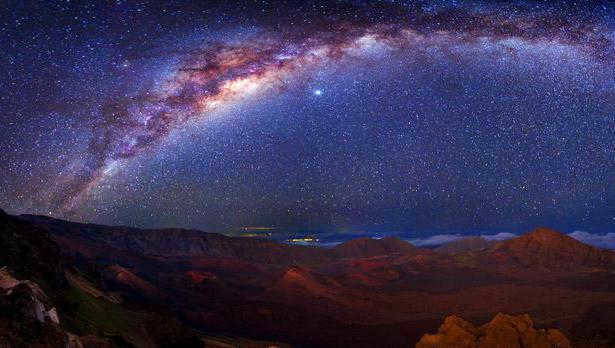
Not many individuals are aware of the fact that our Christmas tree is a reflection of the customs practiced by ancient civilizations. In those times, it was widely believed that the Milky Way served as the central axis of the Universe or the World Tree, where the stars would develop on its branches. This is precisely why the Christmas tree was adorned at the commencement of each yearly cycle. The earthly tree was designed to mimic the perpetually fruitful tree of the heavens. Engaging in such a ritual instilled a sense of hope for divine favor and a bountiful harvest. It is evident that our ancestors held the Milky Way in such high regard.
Exploring the Mystery of the Milky Way
The enigma of the Milky Way has captivated scientists for nearly two millennia. Even in ancient times, luminaries such as Plato recognized this ethereal streak as a celestial bridge connecting the hemispheres of the sky. In contrast, thinkers like Anaxagoras and Demoxides proposed a different perspective, viewing the Milky Way as a radiant tapestry of stars illuminating the night sky. Aristotle, on the other hand, postulated that the Milky Way is a unique luminosity emanating from the gaseous atmosphere surrounding our planet’s moon.
Throughout history, there have been numerous other conjectures about the nature of the Milky Way. The Roman philosopher Marcus Manilius hypothesized that it is a constellation composed of countless celestial luminaries. While his notion came close to reality, it remained unverifiable during an era when stargazing relied solely on the naked eye. All ancient astronomers believed that the Milky Way was an integral part of our solar system.
Galileo’s breakthrough
In 1610, Galileo Galilei made a groundbreaking discovery that unveiled the secrets of the Milky Way. Through the invention and use of the first telescope, the renowned scientist observed that the Milky Way is, in fact, a genuine assemblage of stars. Prior to this revelation, the naked eye would perceive the Milky Way as a continuous, dimly shimmering strip. Galileo even offered an explanation for the irregularities found within this celestial structure.
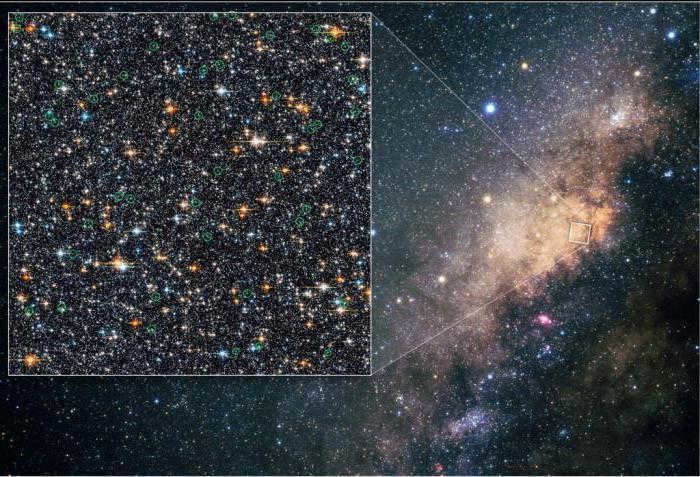
The celestial phenomenon known as the Milky Way is not only composed of star clusters, but also features the presence of dark clouds. It is the unique combination of these two elements that contributes to the awe-inspiring image of this nocturnal phenomenon.
William Herschel’s remarkable find
In the 1920s, Jacobus Kapteyn released a groundbreaking publication that provided the most comprehensive description of the Milky Way known at the time. Within this work, Kapteyn presented a diagram of the celestial island that closely resembles our current understanding. Presently, we comprehend the Milky Way as a Galaxy that encompasses the Solar System, the Earth, and the stars that can be observed by the unaided human eye.
The organization of galaxies
With the advancement of science, astronomical telescopes have become increasingly sophisticated, allowing for a clearer understanding of the structure of observed galaxies. It has been discovered that galaxies are not all identical; there are irregular ones that lack symmetry in their organization.
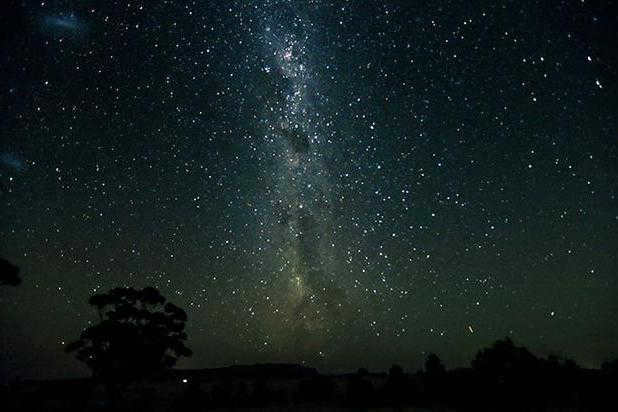
The Milky Way belongs to the category of spiral galaxies, along with elliptical galaxies. Determining the structure of our Galaxy is a challenging task, as we are located inside it. However, scientists have managed to solve this puzzle and determine the nature of the Milky Way. According to their research, it has been classified as a disk-shaped galaxy with an inner core.
General characteristics
The Milky Way is a type of galaxy known as a spiral galaxy. It is also a superstructure consisting of a vast stellar system, interconnected by gravitational forces.
Scientists estimate that the Milky Way has been in existence for over thirteen billion years. During this time, approximately 400 billion stars and constellations, as well as over a thousand large gas nebulae, clusters, and clouds, have formed within this galaxy.
The shape of the Milky Way is evident on the Universe map. Upon observation, it becomes apparent that this collection of stars forms a disk with a diameter of 100,000 light-years (equivalent to ten trillion kilometers). The thickness of the star cluster is 15,000 light-years, and the depth is approximately 8,000 light-years.
Is it possible to determine the mass of the Milky Way? This question is quite challenging to answer. The mass of dark matter, which does not interact with electromagnetic radiation, is particularly difficult to determine. As a result, astronomers cannot provide a definitive answer to this question. However, there are rough estimates available that suggest the weight of our Galaxy falls within the range of 500 to 3000 billion solar masses.
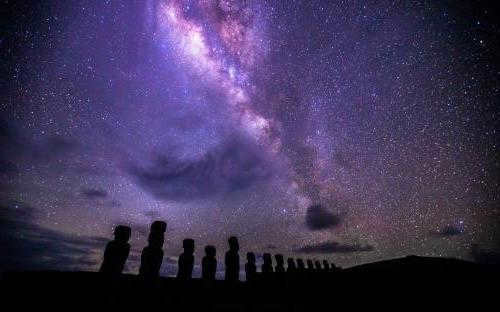
The Milky Way possesses similarities to other celestial bodies in terms of its rotational movement within the universe. Astronomers observe the irregular and sometimes chaotic motion of our Galaxy, which is a result of the varying speeds, shapes, and types of orbits of its constituent star systems and nebulae.
What composes the Milky Way? It consists of a core, lintels, a disk, spiral arms, and a corona. Let’s examine each of these components more closely.
Located at the heart of the Milky Way’s core lies an exceptionally massive black hole. This particular region of space carries a weight equivalent to three million suns and possesses an incredibly potent gravitational force. Orbiting around it is another black hole, albeit smaller in size. The combined presence of these two black holes generates an immensely strong gravitational field, which results in neighboring constellations and stars being compelled to follow highly unconventional trajectories.
The center of the Milky Way boasts other notable characteristics as well. One such feature is the existence of a substantial cluster of stars, closely packed together in comparison to their counterparts found at the outer edges of the formation. The distances between these stars are hundreds of times smaller in scale.
It is intriguing to note that when astronomers observe the nuclei of other galaxies, they observe a bright glow. However, this phenomenon is not observed in the Milky Way. Some scientists have even suggested that our Galaxy lacks a nucleus. Nevertheless, it has been determined that there are dark layers in spiral nebulae, which are clusters of interstellar dust and gas. These dark layers also exist in the Milky Way and prevent us from seeing the brightness of the core. If these massive dark clouds did not obstruct our view, we would be able to observe a shining ellipsoid nucleus, larger than a hundred moons in diameter.
In order to answer this inquiry, advancements in telescopes have played a crucial role. These modern telescopes possess the capability to operate within specific segments of the electromagnetic spectrum. Thanks to these cutting-edge technologies, which can surpass the barrier of dust, scientists have been able to observe the nucleus of the Milky Way.
The architrave
This particular component of the Milky Way traverses its central region and spans a distance of 27 thousand light-years. It comprises of an astounding 22 million red stars, all boasting an impressive age. Encircling this structure is a gas ring, which contains a significant concentration of molecular oxygen. These findings strongly suggest that the architrave of the Milky Way is the primary region where stars are formed in the greatest abundance.
The Milky Way itself possesses this form, and it experiences continuous rotational movement. It is intriguing to note that the rate of this mechanism varies depending on the distance from the central region. Consequently, at the very core, the velocity is zero. However, at a distance of two thousand light years from the nucleus, the rotational speed amounts to 250 kilometers per hour.
Encircling the outer periphery of the Milky Way is a layer comprised of atomic hydrogen, with a thickness measuring 1.5 thousand light years.
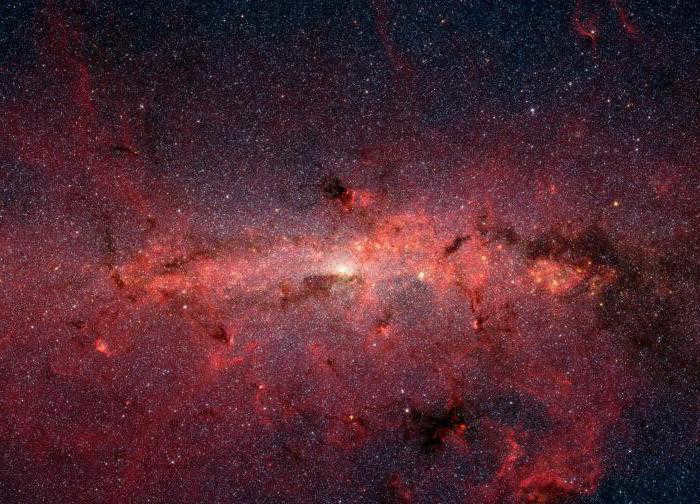

In the outer regions of our Galaxy, scientists have detected the existence of compact agglomerations of gas with a temperature of 10 thousand degrees. These structures have a width spanning several thousand light-years.
These are additional components of the Milky Way, situated directly behind the gas ring. The spiral arms intersect the constellations of Cygnus and Perseus, Orion and Sagittarius, and Centaurus. These formations are unevenly filled with molecular gas. This composition introduces deviations in the rotational patterns of the galaxy.
The spiral arms originate directly from the heart of the stellar archipelago. We observe them with the naked eye, referring to the luminous band as the Milky Way.
The spiral arms overlap each other, creating challenges in discerning their structure. Scientists propose that these arms formed as a result of large-scale waves of rarefaction and compression of interstellar gas in the Milky Way, which propagate from the core to the galactic disk.
Corona
The corona of the Milky Way is a spherical halo that is composed of individual stars and clusters of constellations. It extends beyond the boundaries of the Galaxy for a distance of 50 light years.
Within the corona, there are low-mass and old stars, as well as dwarf galaxies and clusters of hot gas. These components move in elongated orbits around the nucleus, creating a chaotic rotation.
One hypothesis suggests that the corona formed as a result of the Milky Way absorbing small galaxies. Astronomers estimate that the age of the corona is approximately twelve billion years.
Stars’ Locations
On a clear night, the Milky Way can be observed from any location on Earth. Nevertheless, the naked eye is limited to perceiving only a fraction of the Galaxy, which comprises a collection of stars within the Orion arm.
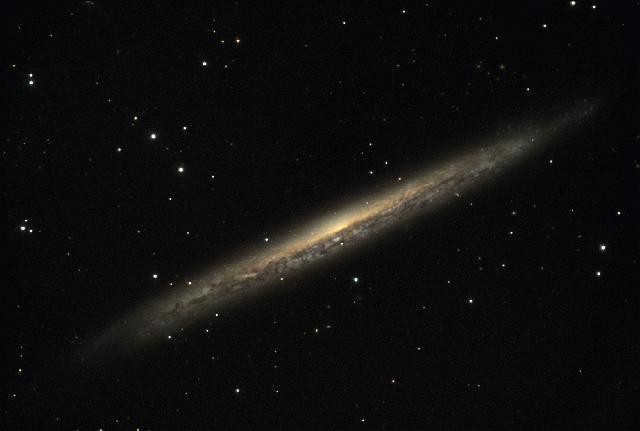
The Milky Way is a constellation that can be best understood by examining a star map. By doing so, it becomes evident that our Sun, which provides light to Earth, is located near the outer edge of the galaxy. Its distance from the galactic nucleus is approximately 26-28 thousand light years. With a velocity of 240 kilometers per hour, the Sun completes one orbit around the nucleus every 200 million years. Consequently, over the course of its existence, the Sun has circled the nucleus only thirty times.
Our planet, Earth, is located on the outskirts of the galaxy, in the most serene region of the galaxy. Due to this, our planet has been fortunate enough to avoid major catastrophes that are common in the Universe, for billions of years.
Future Projections
Scientists predict that in the future, it is highly probable that there will be collisions between the Milky Way and other galaxies, including the largest one, the Andromeda galaxy. However, it is currently impossible to provide specific details as this would require knowledge about the transverse velocities of extragalactic objects, which is currently not accessible to modern researchers.
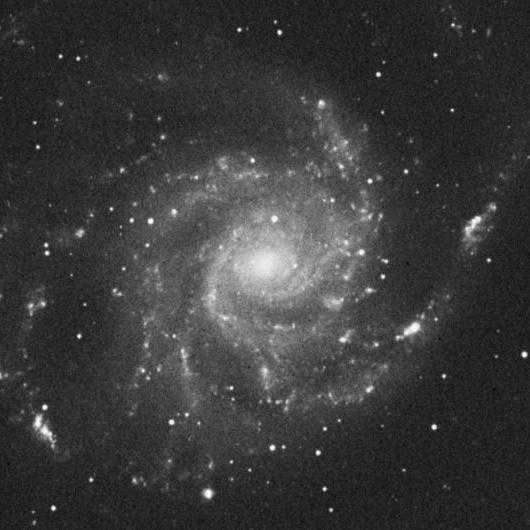
In the media, a model was published in September 2014 that suggests the Milky Way will consume the Magellanic Clouds (Large and Small) in four billion years. After another billion years, it will merge with the Andromeda Nebula and become a part of it.
The state of the universe 13 billion years ago was different from its current state, according to scientists. They posit that during that time, there was a dynamic process of stellar formation occurring across the vast expanse of space. New stars were being born and gravitationally attracted towards one another. Consequently, the initial star clusters emerged, followed by smaller dwarf galaxies, which eventually collided and merged to create larger galaxies like our own Milky Way.
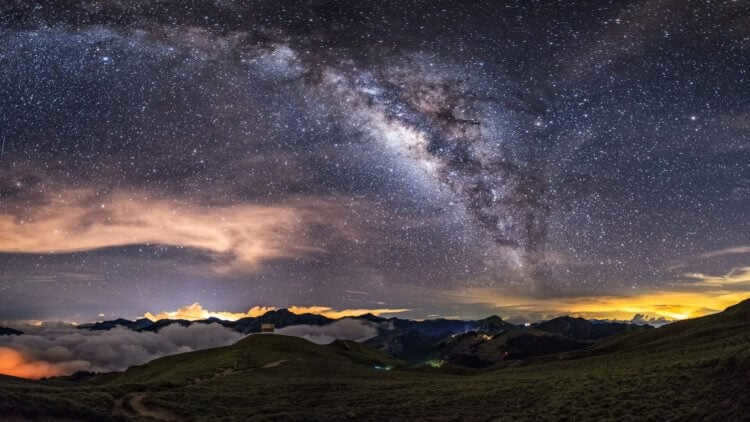
A team of researchers from the Canary Institute of Astrophysics claim that they have successfully unraveled the enigma surrounding the center of the Milky Way.
The Formation of the Milky Way
Throughout their investigation, they were able to determine the precise position and luminosity of one million stars located within a 6500 light-year radius from our Sun, thanks to the innovative Gaia space telescope.
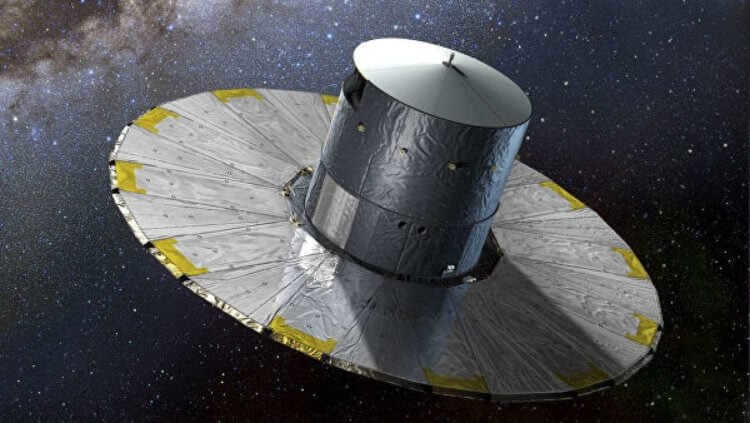
Focusing on the age of stars, scientists have determined that the collision of galaxies occurred approximately 10 billion years ago.
The Milky Way, in its primitive form, began forming stars around three billion years ago. The smaller galaxy, despite having traveled the same distance, was chemically deficient and had less mass. As a result, it was engulfed by the larger galaxy,” the study revealed.
According to the researchers, the process of merging itself took place gradually over several million years.
The merger is not an instantaneous event but rather a gradual process that significantly impacts star clusters, as stated by the study’s authors.
To illustrate this merging process, the scientists have created a 3D animation. You can watch the video below.
According to scientists, the fusion process and the significant amount of interstellar gas that was released ultimately resulted in the formation of the Milky Way as we know it today. However, this is not the first time that such a fusion event has taken place, the scientists pointed out. Throughout its history, the Milky Way has absorbed numerous smaller galaxies. In approximately 5 billion years, our own galaxy will face a similar fate, as it will be engulfed by the neighboring Andromeda galaxy.
Stay updated with our Yandex.Zen subscription. Conveniently stay informed about the latest news from the realms of science and technology.
The universe is filled with countless enigmas and puzzles, and astronomers are still working tirelessly to unravel the mysteries of the Milky Way and determine our planet’s place within it.
The birth of our galaxy can be traced back to the Big Bang, which, according to scientific theories, marked the beginning of the universe. The formation of star systems, including our Milky Way, occurred approximately 100 million years after the Big Bang.
What is the name of our galaxy?
The name of our galaxy, the Milky Way, has its origins in ancient Greek mythology. According to legend, Zeus, the king of gods, desired to grant immortality to his son Heracles. To accomplish this, Zeus asked his wife Hera to breastfeed Heracles, thus bestowing him with divine power.

However, the goddess declined and, in order to stop the milk from reaching the infant, splattered it across the heavens. Galactica is the Greek word for “milky.” As the study of astronomy gained popularity, the arrangement of the celestial sphere evolved with each subsequent revelation.
Discovery and Naming: A Historical Perspective
Space has captivated humanity throughout the ages. The initial breakthroughs in unraveling the mysteries of our galaxy can be attributed to Plato, who postulated a celestial network connecting the hemispheres. Aristotle, on the other hand, hypothesized that the Milky Way is an assemblage of luminous gases within the Earth’s atmosphere. Nevertheless, the conjectures put forth by these ancient Greek philosophers were solely based on theoretical foundations.

The discovery of the telescope revolutionized our understanding of the Milky Way, and it was Galileo who first peered through this remarkable invention. Not only did Galileo have the ability to observe the vast cluster of stars, but he was also able to shed light on the enigmatic glow of this celestial phenomenon and even speculate on its structure, hypothesizing the presence of black holes.
Throughout history, humans have recognized that the Earth orbits the Sun, but the question of whether our solar system resides within the Milky Way or if it is the other way around remained unanswered. It was the English musician turned astronomer, William Herschel, who finally provided a solution to this puzzle. Through systematic observations, he meticulously calculated the number of stars in various regions of the night sky.
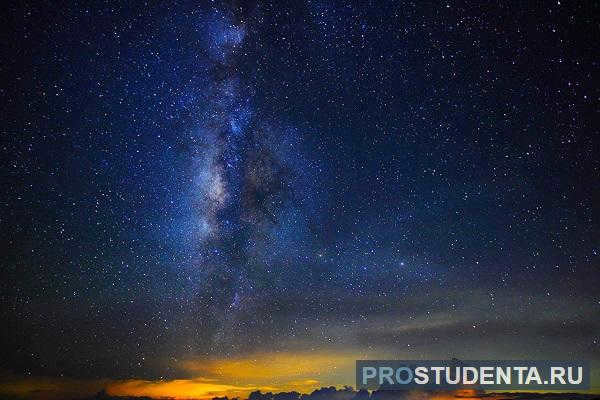
Through the calculation, it has been determined that a celestial formation exists in the heavens known as the galactic equator, which is home to the largest concentration of stars. This celestial formation effectively splits the sky into two distinct halves, with the number of stars increasing as one moves closer to the center of this circular arrangement. At the very heart of this celestial system lies the Milky Way. This groundbreaking discovery ultimately led Herschel to the realization that the stars visible in the night sky are interconnected and organized in a spiral-like pattern.
Distinctive Features of the Milky Way
The Milky Way is positioned on the Orion arm, with a span of 8.5 parsecs from the central axis. It boasts a diameter that spans 100,000 to 200,000 light years, making it an expansive galaxy. The estimated age of this system is approximately 13 billion years.
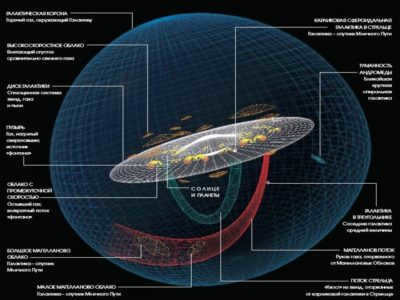
Scientists have not yet determined the exact weight of the Milky Way, but it is estimated to be around 3 trillion solar masses. Similar to any system, the Milky Way revolves around its central point. The galaxy constantly changes its position, moving in a random manner throughout the Universe.
According to scientific calculations, the galaxy we reside in consists of approximately 200 to 400 billion stars. Some of the most luminous and nearest stars are visible to the human eye without the need for any optical aids.
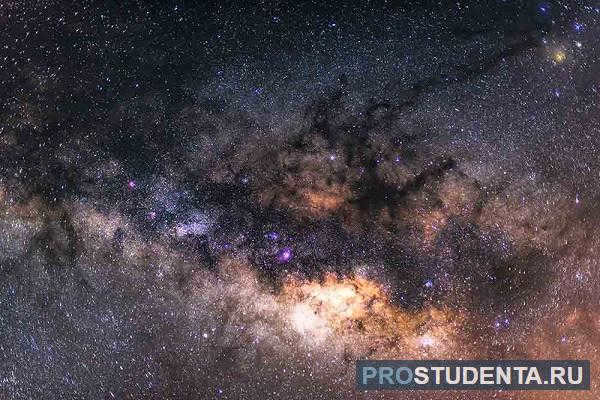
Humans are unable to see most of the celestial lights due to the presence of gas and dust particles. However, the development of infrared cameras has allowed scientists to peer beyond these obstacles.
UY Shields is the name of the largest star in the Milky Way. This red giant is hundreds of times bigger than our Sun. If we were to replace our Sun with UY Shields, its boundaries would extend all the way to the orbit of Jupiter.

Having an idea of the rough count of stars within our galaxy, one can envision the vast number of planets it encompasses. Scientists speculate that this count can rise to hundreds of thousands.
Formation and Cartography of the Milky Way
The stellar system is categorized as a spiral type and boasts five primary arms:
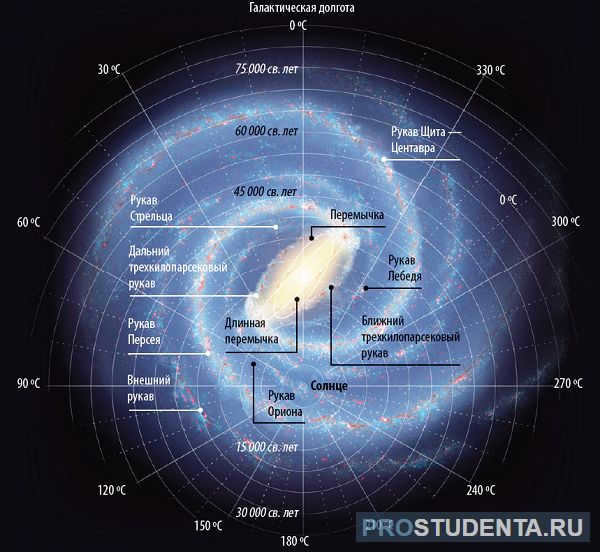
In addition, there is a celestial archway created by luminous stars. This cosmic arch spans a distance of 27,000 light-years, traversing the entirety of our galaxy, commencing from its central region.
Occupying the heart of the Milky Way lies a supermassive black hole. Nebulae are formed by the stars within this galactic system. The remaining expanse is composed of dark matter, a congregation of gaseous cosmic clouds that fill the interstellar void.
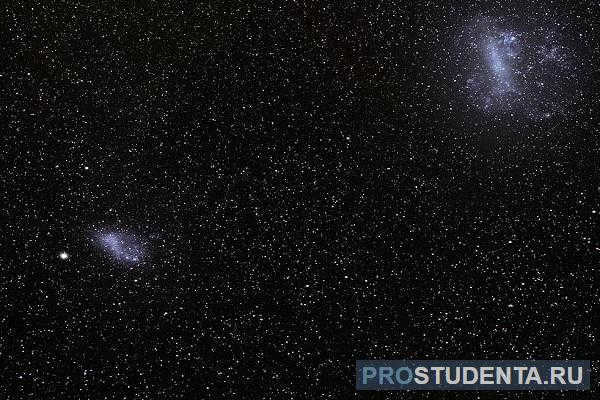
We have two satellite galaxies in our star system: the Small and Large Magellanic Clouds.
Scientists are constantly updating and making corrections and additions to the scheme of the Milky Way.
The closest galaxy to the Milky Way
Our star system has numerous dwarf and giant galaxies orbiting around it. The Andromeda Nebula is the nearest of these galaxies. It is a vast galaxy containing approximately 1 trillion stars.
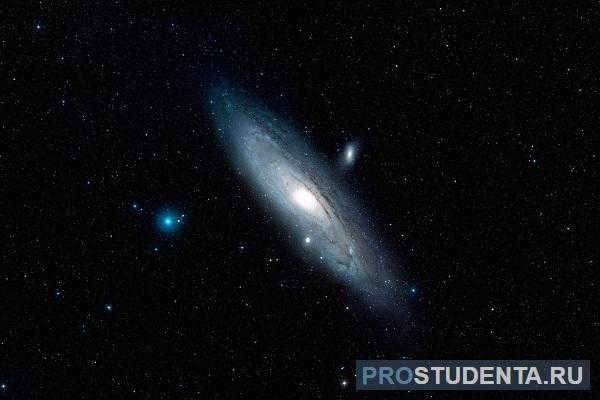
The galaxy’s initial documentation can be attributed to As-Sufi, an astronomer from Persia. Simon Meriem, a German astrophysicist, later made more accurate observations in 1612.
Within the field of astronomy, the galaxy is commonly referred to as M 31. This name was given by Charles Messier during his compilation of a catalog of celestial objects.
The Sun’s Position within the Galaxy
For many years, the prevailing belief among scientists was that the Sun is situated at the very center of the Milky Way. However, after conducting extensive calculations and studying the pulsation of nearby cepheids, astronomers have now reached a different conclusion: the Sun actually resides on the periphery of our galaxy.
Specifically, the distance from the galactic core to our solar giant fluctuates between 20 and 25 thousand light years.

The velocity of the Milky Way’s solar system
The velocity of the Sun within the Milky Way Galaxy is approximately 18-20 km/h. The time it takes for the solar system to complete one rotation is estimated to be around 250 million years. The Sun’s movement is inclined at an angle of 25 degrees relative to the Galactic plane. Approximately every 33 million years, our Sun traverses the galactic equator.
The destiny of our galaxy
Scientists predict that in approximately 4 billion years, our galaxy, the Milky Way, will undergo a cosmic collision with the neighboring galaxy Andromeda. This monumental event will result in the merging of the two galaxies, forming a colossal super galaxy.
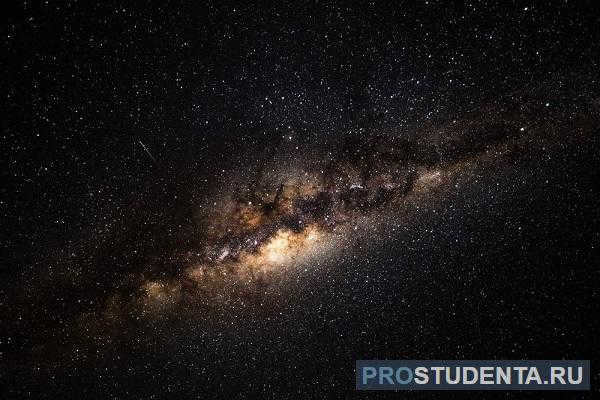
A new name has been coined by astronomers for the system – Mlecomeda. There is still a low likelihood of a collision occurring, as the galaxies have the potential to come close to each other and then move apart.
Fascinating details regarding the Milky Way
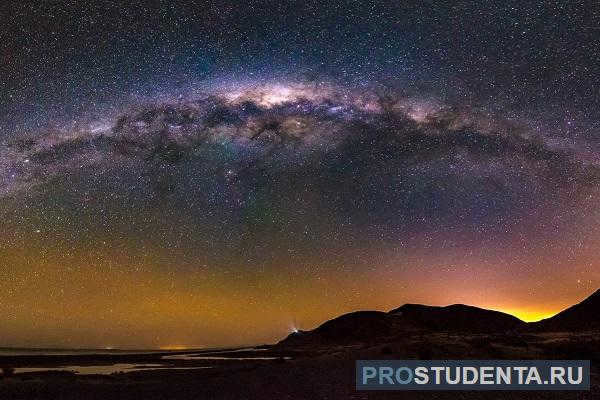
Here are some additional interesting facts:
- The shape of the galaxy appears slightly curved in space photographs due to the influence of the Magellanic Clouds. These clouds attract dark matter, causing fluctuations in hydrogen gas.
- The Milky Way is composed of smaller galaxies. Its structure has been formed through the absorption of dwarf systems.
- There is an extraordinarily large black hole at the center of the galaxy.
- New stars are continuously being formed within the system on an annual basis.
Hello, beloved kids! And warm regards to all you wonderful parents! I propose embarking on a petite expedition into the vast cosmic realm, brimming with mysteries and wonders.
How frequently do we gaze up at the night sky, adorned with sparkling stars, in a quest to spot constellations unearthed by astronomers? Have you ever beheld the celestial marvel known as the Milky Way? Let us delve deeper into this extraordinary cosmic phenomenon while gathering data for an enlightening and captivating “space” endeavor.
What is the origin of this name?

This celestial phenomenon, observed in the starry night sky, can be described as a white-colored band. In ancient times, various mythological stories were used to explain this fascinating sight. Different cultures had their own interpretations of the origin of this extraordinary celestial band.
One of the most widely accepted explanations comes from the ancient Greeks, who believed that the Milky Way was actually spilled mother’s milk from the Greek goddess Hera. This is why the term “milky” is often defined as “resembling milk” in explanatory dictionaries.
There is even a popular song about this phenomenon, which you may have heard before. If not, take a moment to listen to it now.
The Milky Way has been given various names due to its appearance:
- The Chinese refer to it as the “yellow road” because they believe it resembles straw;
- The Buryats describe it as “the seam of the sky” where the stars are scattered;
- The Hungarians associate it with the “road of warriors”;
- The ancient Indians believed it to be the “milk of the evening red cow”.
What is the method for observing a “milk trail”?
Certainly, it is not a common occurrence to witness milk being spilled by someone across the nocturnal expanse on a regular basis. The Milky Way, on the other hand, is an enormous celestial system known as a Galaxy. It bears semblance to a spiral, with a central nucleus and four arms extending outward akin to rays.
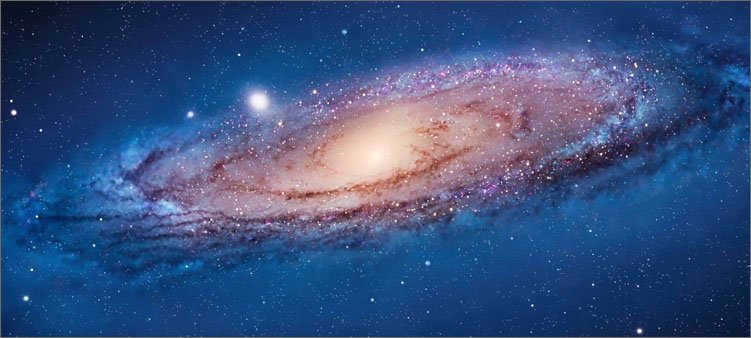
How can one locate this magnificent trail of celestial bodies? This stunning star cluster is visible to the naked eye on clear nights. Every inhabitant of the Milky Way can witness this breathtaking spectacle.
If you reside in the northern hemisphere, you can spot the cluster of stars at midnight in July. As the nights grow longer in August, you can start looking for the Milky Way spiral from 10 PM, and in September, you can start observing it after 8 PM. To witness this mesmerizing sight, first locate the constellation of Cygnus and then direct your gaze towards the north-northeast.
During the months of June and July, when the constellations of Sagittarius and Scorpius appear in the eastern sky, the Milky Way takes on a unique radiance, allowing for the observation of interstellar dust clouds amidst the distant stars.
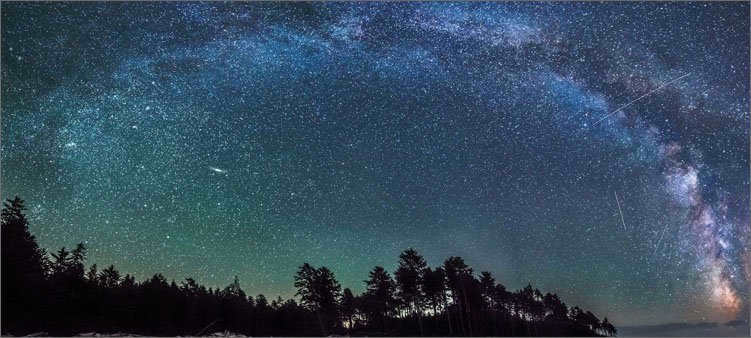
When looking at different pictures, many individuals may wonder why they only see a band instead of a spiral. The explanation is quite simple: we are situated inside the Milky Way! To illustrate this, let’s imagine standing in the center of a hula hoop and holding it at eye level. What would be visible? Exactly, a band right in front of our eyes!
The galactic core can be observed in the Sagittarius constellation by utilizing radio telescopes. However, it’s important to note that it may not appear very luminous. The reason for this is the high concentration of cosmic dust present in the central region, making it the darkest part.
What are the components of the Milky Way?
The Milky Way, our home galaxy, stands out among the multitude of star systems discovered by astronomers due to its significant size. With an estimated 300 billion stars dwelling within it, including our very own Sun, the Milky Way revolves around its core. Within this vast galaxy, there exist stars that surpass the Sun in both size and luminosity, as well as smaller stars that emit a more subdued glow.
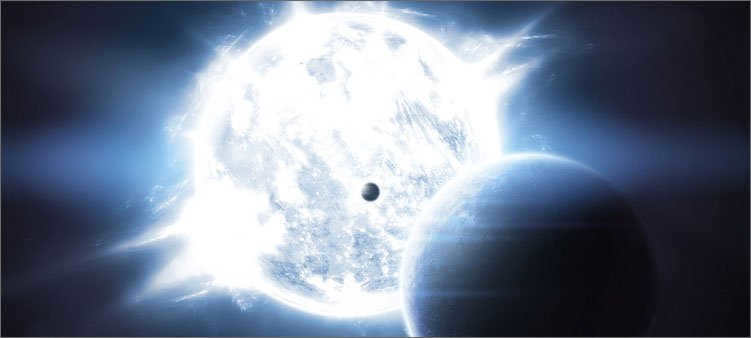

Stars are not only different in terms of their size, but also in terms of their color – they can be blue-white (which are the hottest) or red (which are the coolest). They all orbit around in a harmonious circle with the planets. Just imagine, it takes us nearly 250 million years to complete a full revolution around this galactic circle – that’s how long one galactic year lasts.
Stars reside within the Milky Way, forming groups known as clusters, which vary in age and composition of stars.
- Small scattered clusters are the youngest, only about 10 million years old, yet they are home to massive and luminous celestial beings. These star groups are located along the edge of the plane.
10 fascinating pieces of information
As per usual, I highly recommend embellishing your research paper with the most captivating “cosmic” details. Take a close look at the video and prepare to be astounded!
This is the current state of our Milky Way galaxy, where we reside among a plethora of magnificent and radiant neighboring celestial bodies. If you have not yet had the opportunity to personally acquaint yourself with the “milky way,” I implore you to venture outside and witness the awe-inspiring beauty of the starry night sky.
By the way, have you had the chance to peruse the article pertaining to our cosmic companion, the Moon? If not, I highly recommend that you take a moment to do so now.)
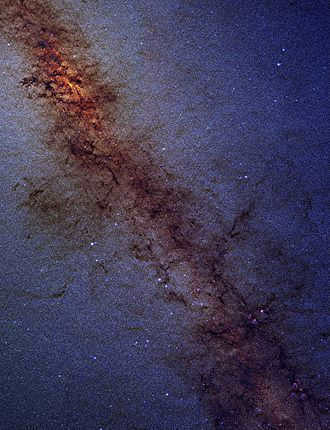
One of the infrared telescopes from the 2MASS project captured an image of the galactic center, which can be seen in the upper left corner of the picture.
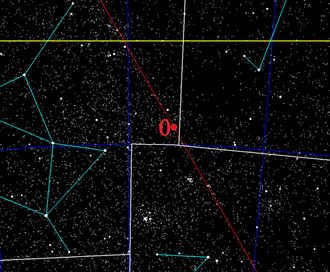
The center of rotation in the Milky Way galaxy, also known as the Galactic Center, is a fascinating celestial phenomenon. At its core lies a supermassive black hole called Sagittarius A*, which weighs approximately 4 million times the mass of our Sun. This compact radio source is situated right at the heart of the galaxy’s rotation. Located in the direction of the constellations Sagittarius, Serpent, and Scorpius, the galactic center is positioned around 8 kiloparsecs (equivalent to 26,000 light-years) away from Earth. It is visually prominent near the Butterfly Cluster (M6) or the star Shaula, which is located south of the Pipeline Nebula.
Within one parsec of the Galactic center, there are approximately 10 million stars. This population is primarily comprised of red giants, although there is also a notable presence of massive supergiants and Wolf-Rayet stars. These stars were formed in this region approximately 1 million years ago. It is important to note that the core stars discussed here are only a fraction of the larger galactic bulge.
Due to the presence of interstellar dust obstructing the line of sight, it is not possible to study the Galactic Center in the visible, ultraviolet, or soft X-ray range. The information available about the Galactic Center is derived from observations made in the gamma-ray, hard X-ray, infrared, submillimeter, and radio wavelengths.
This panoramic video provides a detailed examination of the expansive image of the central regions of the Milky Way. This image is a result of combining numerous images captured by ESO’s VISTA telescope at Paranal in Chile and is compared to a visible-light image. VISTA’s infrared-sensitive camera allows it to penetrate through much of the dust that obstructs the view in visible light, although some of the denser dust strands are still clearly visible in this image.
In his work “General Natural History and Theory of the Sky” (1755), Immanuel Kant proposed that the Milky Way Galaxy has a large star at its center and suggested that Sirius could be that star. In 1918, Harlow Shapley observed that the halo of globular clusters surrounding the Milky Way appears to be centered on star clusters in the Sagittarius constellation. However, the presence of dark molecular clouds in the area makes it difficult to study this region using optical astronomy. In the early 1940s, Walter Baade from Mount Wilson Observatory took advantage of a war blackout in Los Angeles to conduct a study using the 100-inch (250 cm) Hooker telescope. Baade discovered that there is a one-degree-wide gap in the bands of interstellar dust near the star Alnasl (Gamma Sagittarius), which provides a relatively clear view of the star clusters around the core of the Milky Way Galaxy. This region has since been named the Baade Window.
In Sydney, Australia, a group of radio astronomers from CSIRO’s Radiophysics Department, led by Joseph Lade Posey, utilized “marine interferometry” to identify some of the earliest interstellar and intergalactic radio sources, such as Taurus A, Virgo A, and Centaurus A. By 1954, they had constructed an 80-foot (24-meter) fixed parabolic antenna and employed it to conduct a thorough examination of a vast and incredibly powerful strip of radio emission discovered in Sagittarius. They dubbed the concentrated point source situated near the center of this strip Sagittarius A and came to understand that it resided at the precise center of the Galaxy, despite being approximately 32 degrees southwest of the assumed galactic center at the time.
The International Astronomical Union (IAU) made a decision in 1958 to adopt Sagittarius A as the official starting point for the galactic latitude and longitude coordinate system. In terms of the equatorial coordinate system, the exact location is RA 17 h 45 m 40.04 s, Dec -29° 00′ 28.1″ (epoch J2000).
Astronomers made an exciting discovery in July 2022, finding an abundance of prebiotic molecules, including RNA, in the center of the Milky Way Galaxy.
Galactic Center Distance
An animation showcasing a spiral galaxy like the Milky Way reveals the presence of an X-shaped bulge. This X-shape extends for approximately half the radius of the galactic bar. When viewed from the side, the X-shape is clearly visible. However, when observed from the long axis of the bar, the X-shape cannot be directly seen. Instead, its presence is inferred from the distribution of star brightness along a specific direction.
The precise distance between the solar system and the galactic center remains uncertain. However, estimates dating back to 2000 have consistently fallen within the range of 24-28.4 kiloseconds (7.4-8.7 kiloparsecs). Recent estimations, which rely on geometric methods and standard candles, provide the following distances to the Galactic center:
- 7.4 ± 0.2 (stat) ± 0.2 (syst) or 7.4 ± 0.3 kpc ( ≈24 ± 1 thousand years )
- 7.7 ± 0.7 kpc ( ≈25.1 ± 2.3 thousand years )
- 7.94 or 8.0 ± 0.5 kpc ( ≈26 ± 1.6 thousand years )
- 7.98 ± 0.15 (stat) ± 0.20 (systems) or 8.0 ± 0.25 kpc ( ≈26 ± 0.8 cal yr )
- 8.33 ± 0.35 kpc ( ≈27 ± 1.1 cl. years )
- 8.0 ± 0.3 kpc ( ≈25.96 ± 0.98 cl. years )
- 8.7 ± 0.5 kpc ( ≈28.4 ± 1.6 kl. years )
- 8.122 ± 0.031 kpc ( ≈26.49 ± 0.1 cl. years )
- 8.178 ± 0.013(stat) ± 0.022(syst) kpc ( ≈26.67 ± 0.1 kl. yr. )
An precise measurement of the distance to the Galactic center determined from variable stars (such as RR Lyrae-type variables) or standard candles (such as reddening stars) is hindered by various factors, including: a unclear reddening law; a tendency to underestimate the distance to the Galactic center due to the preferential selection of stars located closer to the near side of the Galactic bulge due to interstellar absorption; and uncertainty in accurately determining the displacement of the average distance to the interstellar group.
The characteristics of the Milky Way’s path that passes through the center of the galaxy are currently a topic of much debate. There are various estimates regarding its length and orientation, with some suggesting it to be between 1-5 kpc (either short or long) and others proposing a range of 10-50°. Certain researchers argue that the Milky Way is composed of two distinct lanes, with one contained within the other. This band is defined by the presence of red clump stars (also known as red giants), although it should be noted that RR Lyrae variables do not follow this prominent galactic band. Surrounding this band, there may be a ring referred to as the “ring of 5 kpc,” which contains a significant amount of the Milky Way’s molecular hydrogen and serves as the main site of star formation activity. When observed from the Andromeda Galaxy, this ring is the most visible and striking feature of the Milky Way.
A gigantic black hole
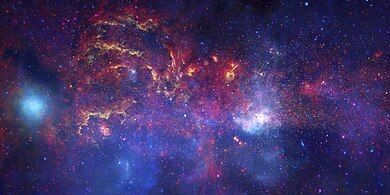
There is a supermassive black hole situated in the bright white region on the right side of the image. This composite image covers approximately half a degree.
The intricate celestial radio source Sagittarius A seems to be positioned almost precisely at the heart of the Galaxy and encompasses a highly concentrated radio source, known as Sagittarius A*. This radio source aligns with the supermassive black hole at the core of the Milky Way. The accretion of gas onto the black hole, possibly involving an accretion disk surrounding it, would generate energy to fuel the radio source, which itself is significantly larger than the black hole.
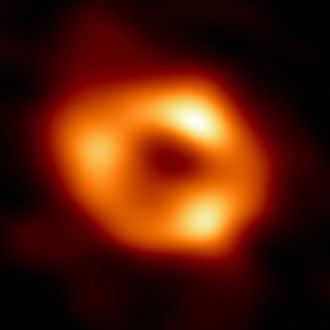
In a study conducted in 2008, scientists used ultra-long baseline interferometry to connect radio telescopes in Hawaii, Arizona, and California. The study revealed that Sagittarius A* has a diameter of 44 million kilometers, which is equivalent to 0.3 astronomical units (a.u.). To put this into perspective, the Earth’s orbit around the Sun has a radius of about 150 million kilometers (1.0 a.u.), while Mercury’s distance from the Sun at its closest point (perihelion) is 46 million kilometers (0.3 a.u.). Therefore, the diameter of Sagittarius A* is slightly smaller than the distance between Mercury and the Sun.
On January 5, 2015, NASA made an announcement about a remarkable discovery – the detection of an incredibly intense X-ray flare from Sagittarius A*. This flare was 400 times brighter than what is typically observed, setting a new record. Scientists speculate that this extraordinary event may have been triggered by the disintegration of an asteroid that plunged into the black hole. Another possible explanation is the entanglement of magnetic field lines in the gas that streams towards Sagittarius A*.
Stellar population
can be rephrased as
Population of stars
.
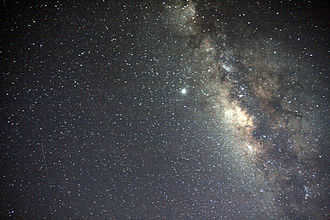
Fermi bubbles that emit gamma-rays and X-rays
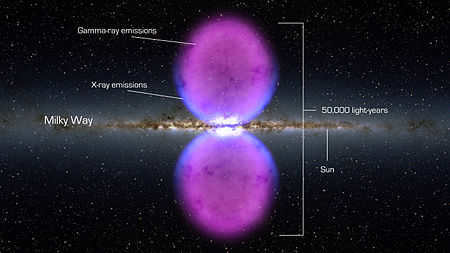
In November 2010, scientists made an exciting announcement about the discovery of two enormous lobed structures of energetic plasma known as “bubbles” on either side of the nucleus of the Milky Way galaxy. These remarkable formations emit both gamma and X-rays and are now commonly referred to as the “Fermi bubbles.” Stretching an impressive 25,000 light-years above and below the Galaxy’s center, these bubbles have captured the attention of researchers worldwide.
Previous attempts to study the galaxy were hindered by the scattered gamma-ray haze, but a breakthrough came when a group of scientists led by D. Finkbeiner, building upon the research of G. Dobler, successfully addressed this issue. The significance of their work was acknowledged in 2014 when Tracy Slayer, Douglas Finkbeiner, and Meng Su were awarded the prestigious Bruno Rossi Prize for their groundbreaking discovery of the Fermi bubbles in gamma rays.
Gallery
In May 2021, NASA released a series of new images showcasing the Galactic Center, which were captured by the Chandra X-ray Observatory and other telescopes. These captivating images span approximately 2.2 degrees (equivalent to 1,000 light-years) in width and 4.2 degrees (equivalent to 2,000 light-years) in length.
The Galactic Center Panorama is a composite image that combines data from the Chandra X-ray Observatory and other telescopes. The first image in the series displays the X-ray emissions detected by Chandra, which are represented by the colors orange, green, and violet, representing different X-ray energies. Additionally, the gray areas in the image show the radio data collected by MeerKAT. Subsequent images in the series present the X-ray data from Chandra in pink, while the radio data from MeerKAT is depicted in blue.
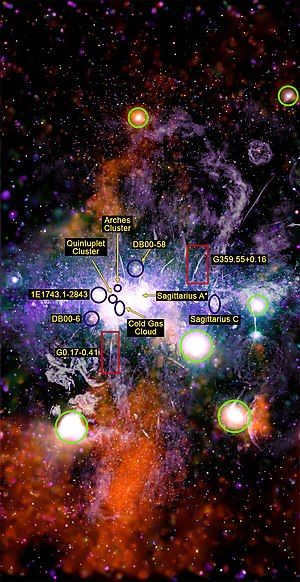
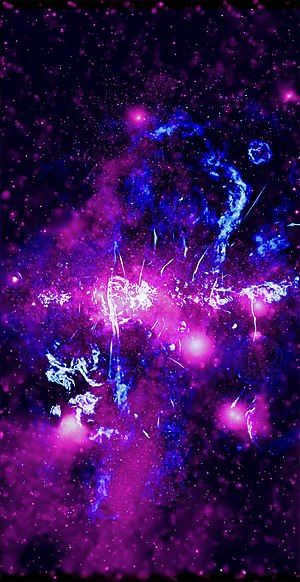
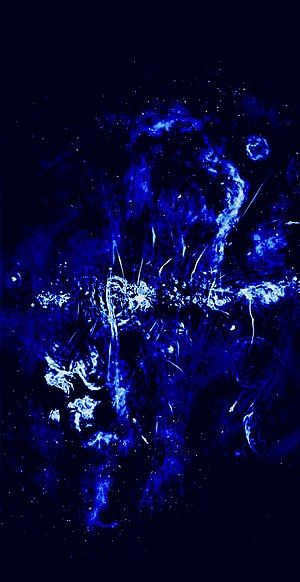
![A small part of a gigapixel color mosaic of the Milky Way's heart.[53]](/wp-content/uploads/images/chto-nahoditsja-v-centre-mlechnogo-puti-otvet_36.jpg)
![White dwarfs in the central part of the Milky Way.[55]](/wp-content/uploads/images/chto-nahoditsja-v-centre-mlechnogo-puti-otvet_37.jpg)
The Milky Way’s center is a picture captured by ISAAC, the near- and mid-infrared camera and spectrometer of the VLT.
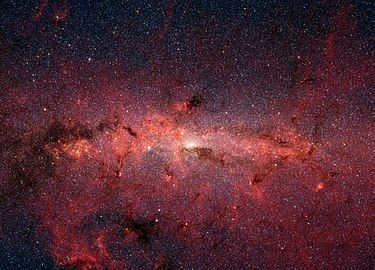
A better contrast and detail of the dust lanes are visible in this enhanced view of the night sky near Sagittarius. The main stars in Sagittarius are highlighted in red.
This image shows the central parts of the Milky Way as observed in the near-infrared using the NACO instrument on ESO’s Very Large Telescope.
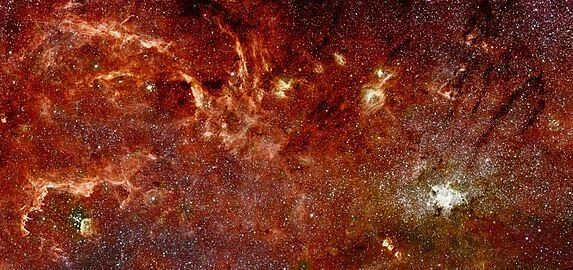
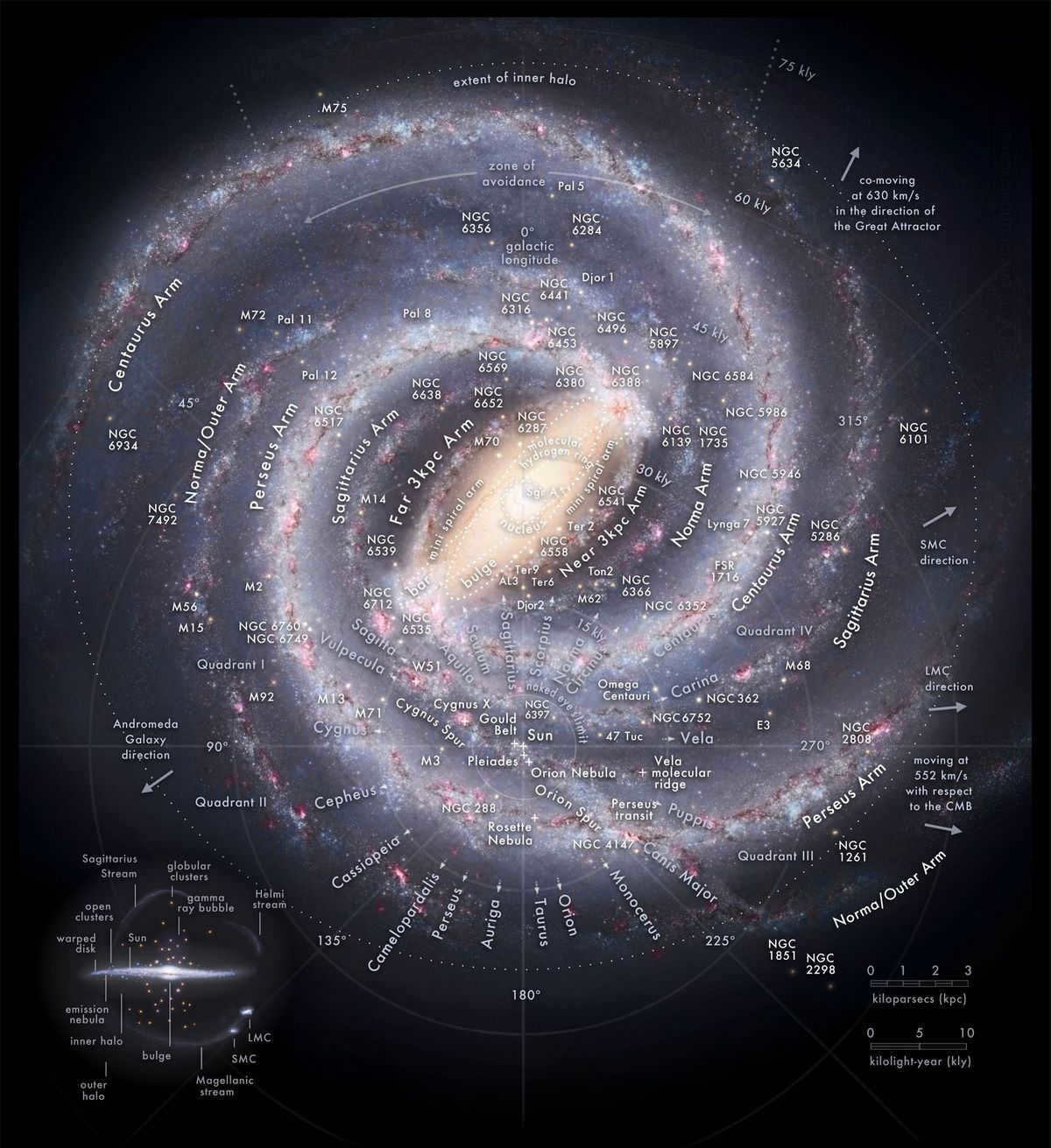
Additional resources
References and sources
Further reading materials
- Eckart, A .; Schedel, R .; Straubmeier, K . (2005). A comprehensive study on the black hole located at the center of the Milky Way. London: Imperial College Press. ISBN978-1-86094-567-0 .
- Melia, Fulvio (2003). Exploring the black hole situated at the heart of our galaxy. Princeton: Princeton University Press. ISBN978-0-691-09505-9 .
- Melia, Fulvio (2007). Unveiling the secrets of the galactic supermassive black hole. Princeton: Princeton University Press. ISBN978-0-691-13129-0 .
- The University of California, Los Angeles has a research group called the Galactic Center Group.
- The Max Planck Institute for Extraterrestrial Physics has a group dedicated to studying the Galactic Center.
- Scientists are studying a supermassive black hole located at the center of our galaxy, the Milky Way.
- There is a black hole located in the center of our galaxy, the Milky Way.
- The center of our galaxy, the Milky Way, is often referred to as the dark heart.
- An animation has been created to show the orbits of stars near the center of the Milky Way galaxy.
- Researchers are using magnification techniques to study the center of the Milky Way in more detail.
- Experts predict a significant increase in the number of supernova explosions in the near future.
- Astronet is an organization focused on astronomical research.
- Embark on a journey to explore the center of the galaxy.
- A cloud of antimatter has been discovered in the galaxy.
- There are fast-moving stars located near the galactic center.
- Scientists are studying the center of the Milky Way.
- The Galactic Center is a region of interest for astronomers.
- An annotated image of the Galactic Center has been created.





